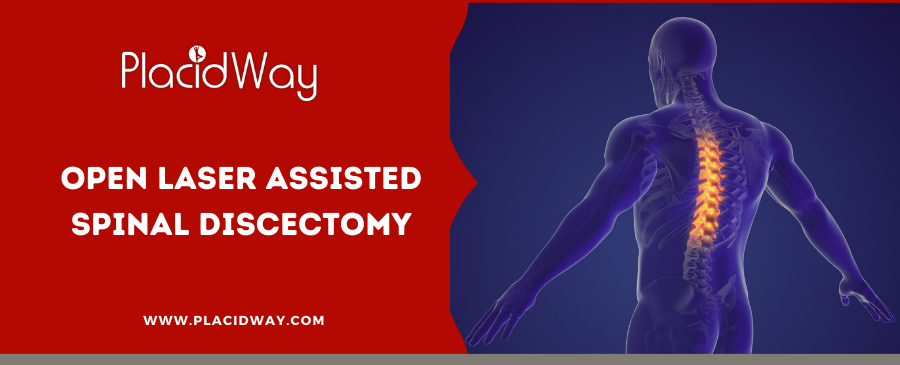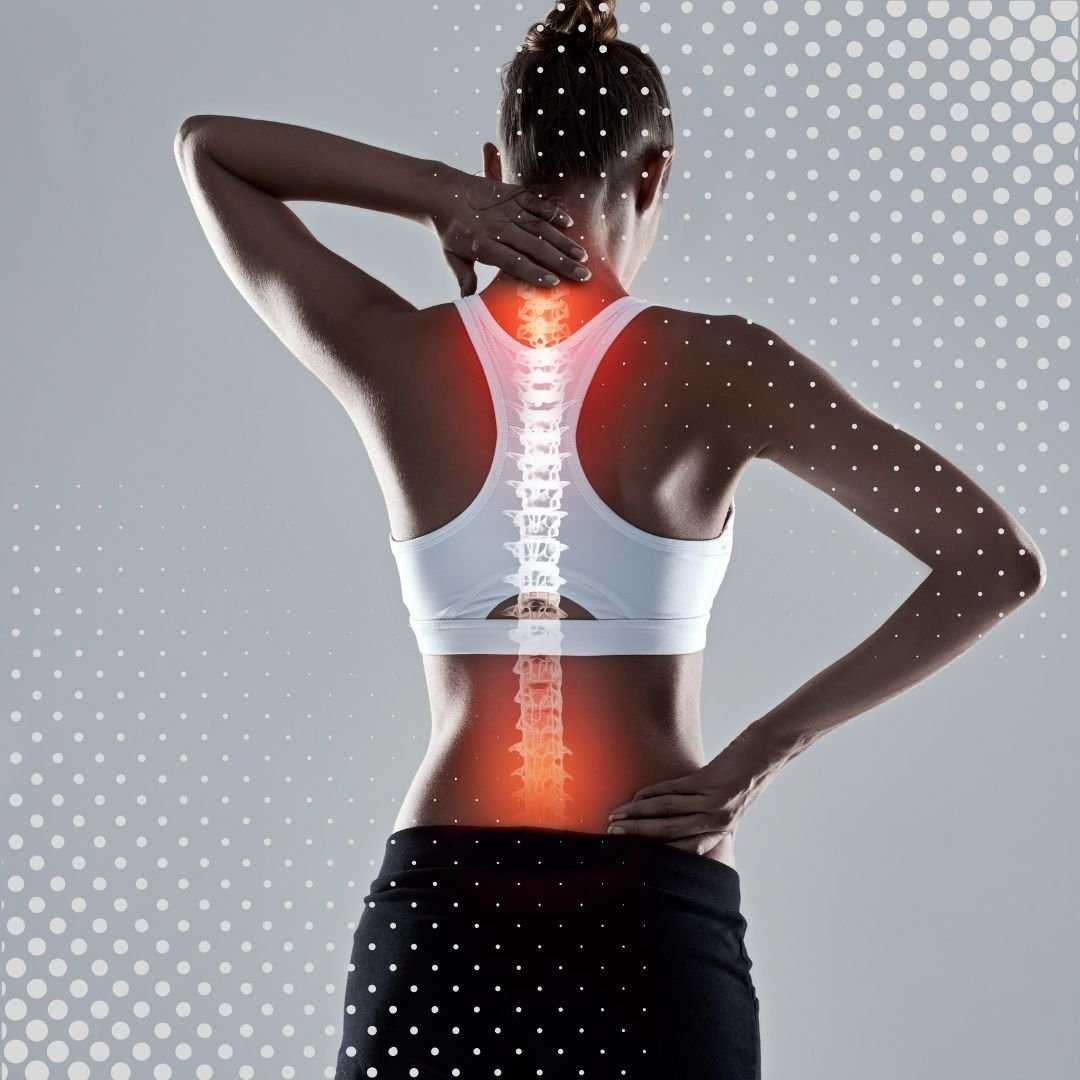
Find Lasting Relief: Understanding Open Laser Assisted Spinal Discectomy
Living with chronic back pain or radiating leg discomfort (sciatica) can be debilitating, impacting every aspect of your life. When conservative treatments fail to provide relief for a herniated disc, Open Laser Assisted Spinal Discectomy emerges as a targeted and effective solution. This advanced procedure combines the precision of traditional open surgery with the innovative application of laser technology to carefully remove the problematic disc material that's pressing on your spinal nerves.
A herniated disc occurs when the soft, gel-like center of a spinal disc pushes through a tear in its tougher outer layer, irritating or compressing nearby nerves. This can lead to a range of uncomfortable symptoms, from localized back pain to tingling, numbness, or weakness extending down your arms or legs. Many people search for terms like "what causes leg pain from back," "sciatica treatment options," or "herniated disc surgery success rates" when grappling with these issues.
Open Laser Assisted Spinal Discectomy is designed to address the root cause of this pain. It's an evolution of traditional discectomy, offering a highly precise way to decompress the affected nerve. For patients seeking high-quality care at a more accessible cost, understanding this procedure and exploring options through medical tourism can open doors to effective treatment and a better quality of life.
What symptoms indicate you might need a spinal discectomy?
Recognizing the signs that you might be a candidate for a spinal discectomy is crucial for seeking timely treatment. The symptoms typically arise from a disc herniation or bulge compressing a spinal nerve. Patients often search for "signs of pinched nerve in back," "when is back surgery necessary," or "leg pain from herniated disc." Here are the common indicators:
- Persistent Back Pain: Chronic lower back pain that doesn't improve with rest, medication, or physical therapy.
- Radiating Leg Pain (Sciatica): Pain that travels from your lower back, through your buttock, and down one leg (or sometimes both). This is often described as sharp, burning, or electrical.
- Numbness or Tingling: A sensation of "pins and needles" or complete numbness in parts of your leg, foot, or toes.
- Muscle Weakness: Difficulty lifting your foot (foot drop), weakness in your leg muscles, or trouble standing on your tiptoes.
- Bowel or Bladder Dysfunction: In rare cases (cauda equina syndrome), severe nerve compression can lead to loss of bladder or bowel control, which is a medical emergency.
If you're experiencing several of these symptoms, especially if they are worsening or significantly impacting your daily life, it's essential to consult a specialist to determine if a spinal discectomy is the right course of action.
What are the common causes and risk factors for disc herniation?
Understanding why discs herniate can help in prevention and treatment. People often search for "what causes a slipped disc," "risk factors for back pain," or "how to prevent disc problems." Here's a breakdown:
- Degenerative Disc Disease: This is the most common cause. As we age, our spinal discs lose water content, becoming less flexible and more prone to tearing. It’s like an old tire that gets brittle and cracks.
- Improper Lifting: Using your back instead of your legs to lift heavy objects can put immense strain on your lumbar spine, leading to a sudden herniation.
- Trauma: A sudden fall, car accident, or direct blow to the back can cause a disc to rupture.
- Obesity: Excess body weight puts additional stress on the discs in your lower back, increasing the risk of herniation.
- Genetics: Some individuals may be genetically predisposed to developing disc problems.
- Repetitive Spinal Stress: Certain occupations involving prolonged sitting, standing, or repetitive bending and twisting can contribute to disc wear and tear.
- Smoking: Nicotine can reduce blood flow to spinal discs, accelerating degeneration.
While some factors are beyond our control, adopting healthy lifestyle habits and proper body mechanics can significantly reduce your risk of disc herniation.
How does Open Laser Assisted Spinal Discectomy differ from other treatments?
When considering surgical options for a herniated disc, it's helpful to understand the spectrum of available treatments. Patients often look for "microdiscectomy vs laser discectomy," "open back surgery vs minimally invasive," or "laser spine surgery effectiveness."
- Conservative Treatments: These are always the first line of defense, including physical therapy, medication (pain relievers, anti-inflammatories), steroid injections, and lifestyle modifications. If these don't work after several weeks or months, surgery may be considered.
- Traditional Open Discectomy: This involves a larger incision and muscle retraction to access the spine and remove the herniated disc portion. It's highly effective but can lead to more tissue damage and longer recovery.
- Microdiscectomy: A more common and less invasive approach than traditional open surgery. It uses a small incision, a microscope, or endoscope to magnify the surgical field, allowing for precise removal of disc material with minimal muscle disruption.
- Percutaneous Laser Disc Decompression (PLDD): This is a *minimally invasive* procedure where a needle is inserted into the disc, and a laser vaporizes a small portion of the disc nucleus to reduce internal pressure. It's often used for contained bulges rather than true herniations.
- Open Laser Assisted Spinal Discectomy: This technique is a hybrid. It involves a small, precise incision (similar to microdiscectomy) to gain direct visualization, but then utilizes laser energy to precisely vaporize or remove the herniated disc material. The laser's precision can help target the specific area causing nerve compression, potentially leading to less tissue manipulation and bleeding compared to purely mechanical removal in some cases. It bridges the gap between traditional open surgery and less invasive laser-only techniques, aiming for precise nerve decompression.
The choice of procedure depends on the specific nature of your herniation, its location, and your surgeon's expertise.
Who is an ideal candidate for Open Laser Assisted Spinal Discectomy?
Deciding on surgery is a significant step. Patients often ask, "am I a candidate for back surgery?" or "when is laser spine surgery recommended?" Here are the criteria that generally make someone an ideal candidate for Open Laser Assisted Spinal Discectomy:
- Confirmed Herniated Disc: Imaging tests like MRI clearly show a herniated disc that correlates with your symptoms.
- Persistent Symptoms: You've experienced significant, debilitating pain, numbness, or weakness for at least 6-12 weeks that hasn't responded to extensive conservative treatments (e.g., physical therapy, medication, injections).
- Specific Nerve Compression: Your symptoms indicate a specific nerve root is being compressed by the herniated disc, causing symptoms like sciatica.
- Good Overall Health: You are in reasonably good general health, without severe underlying conditions that would make surgery too risky.
- No Progressive Neurological Deficit: While rare, rapidly worsening weakness or bowel/bladder dysfunction (cauda equina syndrome) makes surgery urgent rather than elective, but still indicates candidacy.
- Motivation for Recovery: You are committed to participating in post-operative physical therapy and following recovery guidelines.
It's important to have a thorough evaluation by a spine specialist to determine if this procedure is the best option for your specific condition.
What is the typical recovery time and what can you expect post-procedure?
Recovery from any spinal surgery requires patience and adherence to your surgeon's instructions. Patients often search for "laser discectomy recovery timeline," "how long after back surgery can I drive," or "post-spinal discectomy exercises."
- Immediately After Surgery: You'll typically be mobilized within hours of surgery. Pain medication will be provided. Most patients go home the same day or the next day.
- First 1-2 Weeks: Expect some soreness at the incision site. You'll need to limit bending, lifting (anything heavier than a gallon of milk), and twisting. Walking is encouraged for circulation.
- 2-4 Weeks: Many patients can return to light desk work. Physical therapy often begins, focusing on gentle stretching and core strengthening. You may be cleared to drive.
- 1-3 Months: Physical therapy progresses. You'll gradually increase activity levels, focusing on strengthening and improving flexibility. Most patients experience significant reduction in nerve pain.
- 3-6 Months and Beyond: Full recovery, including a return to more strenuous activities and sports, can take several months. Continued adherence to an exercise program and proper body mechanics is vital for long-term success.
The pace of recovery is individual, but consistent effort in rehabilitation is key to achieving the best possible outcome.
What are the potential risks and side effects of spinal discectomy?
While Open Laser Assisted Spinal Discectomy is generally safe and effective, like all surgical procedures, it carries potential risks and side effects. People often search for "risks of back surgery," "complications of discectomy," or "is laser spine surgery safe?"
- Infection: Though rare, any surgical incision can become infected.
- Bleeding: Some bleeding is normal, but excessive bleeding can occur.
- Nerve Damage: In very rare cases, nerves can be damaged during surgery, leading to new weakness, numbness, or pain.
- Dural Tear (CSF Leak): The dura is the membrane surrounding the spinal cord. A tear can lead to cerebrospinal fluid (CSF) leakage, which usually heals on its own but may require further intervention.
- Persistent Pain: Even after successful surgery, some patients may experience ongoing or residual pain.
- Recurrent Disc Herniation: There's a small chance (about 5-10%) the disc can re-herniate at the same level, sometimes requiring revision surgery.
- Anesthesia Risks: Reactions to anesthesia are possible, though rare.
- Scar Tissue: Formation of scar tissue around the nerves post-surgery, which can occasionally lead to ongoing symptoms.
Your surgeon will discuss these risks with you thoroughly before the procedure, ensuring you are fully informed.
How does the worldwide cost for this procedure compare?
One of the primary drivers for medical tourism is the significant difference in healthcare costs. Patients often search for "cost of laser spine surgery," "affordable back surgery abroad," or "medical tourism spine surgery prices."
Here's an estimated cost comparison for Open Laser Assisted Spinal Discectomy (prices are approximate and can vary widely based on clinic, surgeon, specific case complexity, and inclusions):
| Country | Estimated Cost (USD) | Notes |
|---|---|---|
| USA | $30,000 - $60,000+ | High costs due to healthcare system, insurance often required. |
| UK (Private) | $20,000 - $45,000 | Private care for faster access, public NHS has long waitlists. |
| Canada (Private) | $25,000 - $50,000+ | Limited private options, public system has significant wait times. |
| India | $5,000 - $12,000 | Known for world-class JCI-accredited hospitals and skilled surgeons. |
| Thailand | $6,000 - $15,000 | Excellent facilities, English-speaking staff, popular for medical tourists. |
| Mexico | $7,000 - $14,000 | Proximity to USA, growing number of specialized spine centers. |
| Turkey | $7,000 - $16,000 | Modern hospitals, often includes travel and accommodation packages. |
As seen, the potential for savings abroad is substantial, often covering the cost of travel and accommodation, making high-quality surgical care accessible to more patients.
Why should you consider medical tourism for spinal discectomy?
For many patients, the decision to seek medical treatment abroad is driven by compelling advantages. People frequently search for "benefits of medical tourism," "why go abroad for spine surgery," or "affordable back pain treatment."
- Cost Savings: This is often the primary motivator. Procedures in popular medical tourism destinations can be 50-80% cheaper than in Western countries, even when factoring in travel and accommodation.
- Reduced Wait Times: In countries with universal healthcare systems, long waitlists for elective surgeries like discectomy are common. Traveling abroad often allows for immediate scheduling.
- Access to Specialized Care: Many international hospitals boast world-renowned specialists and state-of-the-art technology that may not be readily available or affordable in your home country.
- High-Quality Facilities: Numerous hospitals in medical tourism hubs are internationally accredited (e.g., JCI), ensuring they meet stringent global standards for patient care and safety.
- Privacy and Anonymity: Some patients prefer the discretion and privacy offered by receiving treatment away from their local community.
- Travel Opportunity: For some, the journey offers an opportunity to explore a new culture and recover in a different environment.
Medical tourism presents a viable path for those seeking effective, high-quality, and more affordable solutions for their spinal health.
Which countries offer the best value and quality for laser spine surgery?
Identifying the right destination is crucial when planning medical travel. Patients often search for "best countries for back surgery," "affordable spine surgery India," or "top hospitals for laser spine surgery abroad."
- India: A global leader in medical tourism, offering advanced spine surgery at a fraction of Western costs. Many hospitals are JCI-accredited, with highly skilled English-speaking surgeons and comprehensive care packages.
- Thailand: Renowned for its hospitality and world-class medical facilities, particularly in Bangkok and Phuket. Excellent infrastructure, competitive pricing, and a strong focus on patient experience.
- Mexico: A popular choice for North Americans due to its proximity. Offers high-quality, modern hospitals, especially in border cities and major urban centers, with significant cost savings.
- Turkey: With its strategic location, state-of-the-art hospitals, and government support for health tourism, Turkey is emerging as a top destination for complex surgeries, including spinal procedures.
- Costa Rica: Known for its beautiful environment and growing medical tourism sector, offering personalized care and good value for certain procedures.
When choosing a destination, look for hospitals with international accreditations (like JCI), transparent pricing, and positive patient reviews. Using a reputable medical tourism facilitator can greatly simplify this process.
What should you expect when traveling abroad for this procedure and how to ensure safety?
Preparing for medical travel can seem daunting, but with proper planning, it can be a smooth and successful experience. Patients often ask, "how to prepare for medical tourism," "safe medical travel tips," or "what to expect from overseas surgery."
What to Expect:
- Pre-travel Consultation: You'll typically have virtual consultations with the surgeon to discuss your diagnosis, treatment plan, and answer your questions.
- Travel Logistics: A medical tourism facilitator (like PlacidWay) can assist with flight bookings, airport transfers, accommodation (often discounted rates or packages), and visa requirements.
- Language Support: Most top medical tourism hospitals have multilingual staff or dedicated interpreters to ensure clear communication.
- Accommodation: You'll likely stay in a hotel or guesthouse near the hospital, suitable for recovery, before and after your procedure.
- Pre-operative Tests: Upon arrival, you'll undergo necessary blood tests and imaging to ensure you're fit for surgery.
- Hospital Stay: Your hospital stay will be comfortable, with high standards of nursing care.
- Post-operative Care: Your surgeon will provide specific instructions for recovery, and follow-up appointments will be scheduled before you return home.
How to Ensure Safety and Quality:
- Choose Accredited Facilities: Prioritize hospitals with international accreditations like Joint Commission International (JCI), which signify adherence to global patient safety and quality standards.
- Verify Surgeon Credentials: Research your surgeon's qualifications, experience with Open Laser Assisted Spinal Discectomy, and professional affiliations.
- Read Patient Reviews: Look for testimonials and success stories from previous international patients.
- Transparent Pricing: Ensure you understand all costs included in your package (surgery, hospital stay, medications, PT, etc.) to avoid hidden fees.
- Use a Reputable Facilitator: Companies like PlacidWay specialize in connecting patients with trusted, high-quality medical providers worldwide, offering support throughout your journey.
- Travel Insurance: Consider purchasing medical travel insurance that covers unforeseen complications.
What are patient success stories from abroad?
Hearing about real-life experiences can provide immense reassurance for those considering medical tourism. Many patients search for "medical tourism success stories," "laser spine surgery testimonials," or "life after discectomy abroad."
While specific individual stories vary, the overarching theme among patients who choose Open Laser Assisted Spinal Discectomy abroad is one of profound relief and renewed hope. Imagine John, a 45-year-old from the UK, who suffered from debilitating sciatica for years, unable to get timely surgery through his local system. He traveled to India for Open Laser Assisted Spinal Discectomy, saving over 70% on costs. Within weeks, his leg pain was gone, and he was able to return to his active lifestyle, a testament to the efficient and high-quality care he received.
Similarly, Maria, a teacher from Canada, faced a long waitlist for her herniated disc surgery. She chose a JCI-accredited hospital in Thailand, where she was impressed by the personalized attention, advanced technology, and the expertise of her surgeon. Her recovery was smooth, and she quickly regained her mobility, expressing deep gratitude for the swift and effective treatment that allowed her to return to her passion for teaching without pain.
These stories highlight not just the successful surgical outcomes but also the comprehensive care, affordability, and the life-changing impact that medical tourism for Open Laser Assisted Spinal Discectomy can offer, empowering patients to take control of their health journey.
Take the Next Step with PlacidWay
Ready to explore treatment options abroad? Discover top clinics, compare prices, and get a free quote tailored to your needs with PlacidWay.
Affordable Spine Surgery | Best Spine Surgery Abroad





.png)
.png)
.png)
.jpg)

Share this listing